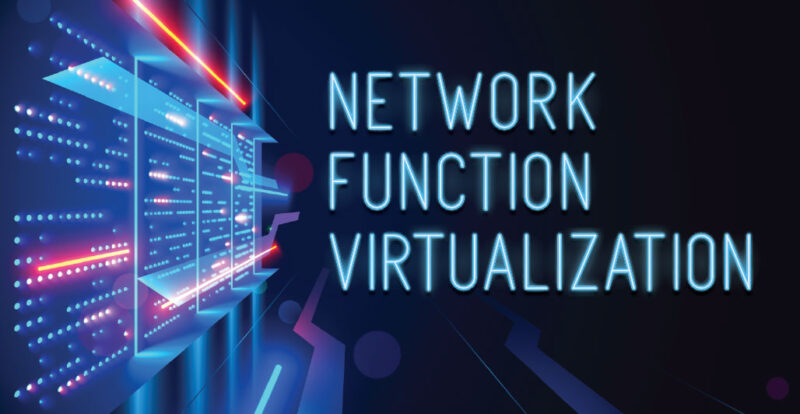In today’s rapidly evolving business landscape, the ability to adapt and grow seamlessly has become a competitive necessity. Future-proofing your IT infrastructure against the unpredictable winds of change requires a strategic approach to scalability.
This article aims to delve into crucial strategies and considerations necessary to fortify your IT infrastructure, ensuring it remains agile and resilient in the face of evolving demands.
Understanding Scalability

At its core, scalability isn’t just an add-on feature; it’s a foundational strategy deeply embedded in an organization’s IT infrastructure. It encompasses both vertical scalability (expanding resources within a single system) and horizontal scalability (adding more systems). An efficiently scalable infrastructure accommodates growth without sacrificing performance, security, or reliability.
Embracing Modular Architecture
Adopting a modular approach lays the groundwork for scalability. Breaking down infrastructure components into discrete modules or microservices allows for flexible, independent scaling. Technologies like Docker and Kubernetes facilitate containerization and microservices architecture, enabling rapid deployment and improved manageability.
Leveraging Virtualization and Cloud Technologies
Virtualization is a cornerstone of scalability, separating hardware from software to run multiple virtual instances on a single physical machine. Cloud computing, an indispensable asset, enables dynamic resource scaling and pay-as-you-go models.
While public clouds offer scalability, private clouds stand out for their dedicated resources, enhanced control, data privacy, and customizable configurations, making them ideal for scalable and secure infrastructures.
The Role of Private Cloud in Scalability

Private clouds play a pivotal role in future-proofing IT infrastructure. Offering dedicated resources and a higher level of control compared to public clouds, they ensure data privacy, compliance adherence, and adaptable configurations. In the scalability journey, private clouds stand as a robust solution that grants control without compromising security.
Automation and Orchestration
Automation is key in streamlining processes and ensuring consistent performance during scaling operations. Orchestration tools coordinate complex tasks across various components, optimizing resource utilization and minimizing downtime. The integration of DevOps practices with automation and orchestration fosters agility and scalability while maintaining stability.
Scalable Data Management
Managing data efficiently becomes imperative as volumes surge. Implementing scalable storage solutions, such as distributed file systems and object storage, allows for seamless expansion without compromising performance. Additionally, leveraging data-driven strategies, including analytics and AI, aids in extracting insights from large datasets, further enhancing scalability.
Security and Resilience

Scalability must harmonize with robust security measures and resilience. Implementing a comprehensive security framework encompassing encryption, access controls, and threat monitoring fortifies against vulnerabilities during expansion. Redundancy and disaster recovery mechanisms ensure continuity, even amid unforeseen events, strengthening the infrastructure’s resilience.
Elasticity and Load Balancing
Elasticity is the ability of an infrastructure to scale resources dynamically based on demand. Load balancing plays a pivotal role in distributing workloads across multiple resources to ensure optimal performance and prevent bottlenecks. Implementing load balancers, both hardware and software-based, enables efficient resource allocation and enhances scalability by ensuring no single component is overwhelmed.
Edge Computing for Scalability
Edge computing, a paradigm where data processing is done closer to the source, reduces latency and bandwidth usage. It decentralizes computation and data storage, facilitating quicker responses.
Leveraging edge computing can significantly enhance scalability, particularly in scenarios where real-time processing and immediate actions are necessary, such as IoT devices and remote operations.
Scalable Networking Infrastructure

As the foundation of IT operations, networking infrastructure must be scalable. Software-defined networking (SDN) and network function virtualization (NFV) allow for flexible network configurations and resource allocation. By decoupling network functions from hardware, organizations can scale their networking capabilities based on evolving needs without significant hardware investments.
Continuous Monitoring and Optimization
Scalability is not a one-time action but an ongoing process. Continuous monitoring using robust analytics and performance metrics is crucial. It helps in identifying bottlenecks, predicting demand spikes, and optimizing resource allocation. Real-time insights enable proactive adjustments, ensuring the infrastructure remains scalable and responsive to changing requirements.
Agile Governance and Compliance
Maintaining compliance and governance standards while scaling is paramount. Establishing agile governance practices ensures that as the infrastructure grows, compliance with regulatory requirements and internal policies remains intact. Implementing scalable compliance frameworks that can adapt to evolving regulations is essential to prevent any disruptions in the scalability journey.
Flexible Vendor and Technology Selection

Maintaining flexibility in vendor and technology selection is pivotal for long-term scalability. Technology landscapes evolve rapidly, and vendor offerings vary in features and compatibility. Choosing solutions that allow interoperability and easy integration with existing systems ensures adaptability to future innovations.
Moreover, a vendor-agnostic approach enables organizations to pivot and incorporate new technologies without major disruptions, enhancing the scalability and longevity of the IT infrastructure. This flexibility empowers businesses to capitalize on emerging trends and technological advancements while maintaining a scalable and future-ready IT environment.
Optimizing Resource Allocation Through Scalable Networking
In the quest to future-proof your IT infrastructure for scalability, don’t underestimate the significance of your networking capabilities. A robust and adaptable networking infrastructure is essential for seamless expansion and resource allocation. Software-defined networking (SDN) and network function virtualization (NFV) are significant players in achieving this critical aspect of IT scalability.
Software-Defined Networking (SDN)
SDN is a paradigm shift in networking that decouples the control plane from the data plane, providing centralized control and programmability over network resources. This architectural approach allows organizations to dynamically adjust their network configurations and allocate resources based on evolving requirements.
With SDN, scalability becomes more accessible as you can easily add or remove network components, allocate bandwidth, and prioritize traffic flows. This flexibility is particularly valuable when scaling your IT infrastructure to accommodate growing demands. SDN’s centralized management simplifies network provisioning, ensuring that resources are efficiently utilized without the need for extensive manual intervention.
Network Function Virtualization (NFV)

NFV takes the virtualization concept applied to computing and extends it to networking functions. Instead of relying on dedicated hardware appliances for network services like firewalls, load balancers, and routers, NFV allows these functions to be implemented as virtualized software instances running on commodity hardware.
The benefits of NFV in scalability are twofold. First, it reduces hardware dependencies, making it easier to scale network functions by spinning up or down virtual instances as needed. Second, NFV enhances resource utilization by consolidating multiple network functions onto a single hardware platform, making it a cost-effective approach to scaling network capabilities.
Scalability Without Significant Hardware Investments
One of the key advantages of both SDN and NFV is that they enable scalability without the need for substantial hardware investments. Traditional networking often involves purchasing additional hardware devices to accommodate increased traffic or network complexity. In contrast, SDN and NFV provide the flexibility to adapt and grow your network infrastructure through software-driven configurations.
By embracing SDN and NFV, organizations can easily adjust their networking capabilities to align with evolving needs. This adaptability ensures that your networking infrastructure remains a supporting pillar of your scalable IT environment, capable of handling increased workloads and ensuring optimal performance without the constraints of traditional hardware-bound solutions.
Conclusion

Future-proofing IT infrastructure for scalability requires a holistic approach that merges technological innovation, strategic planning, and adaptability. Modular architectures, cloud technologies like private clouds, automation, scalable data management, and a fortified security framework form the pillars of this journey. Businesses proactively investing in these strategies construct a resilient foundation, empowering them to navigate the evolving landscape with agility and confidence.
In summary, the integration of a private cloud solution, strategically positioned within a comprehensive scalability framework, epitomizes the adaptability and control essential for future-proofing IT infrastructure in the ever-evolving technological landscape.

